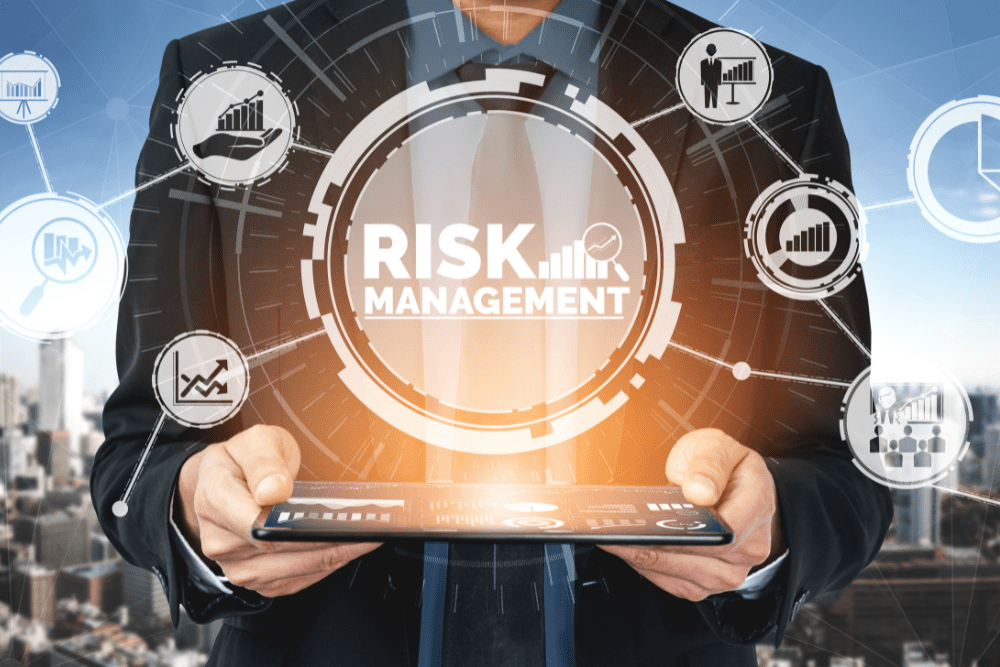In an environment where organisations are continuing to embrace digital transformation, the importance of cybersecurity has never been more pronounced. As cyber threats evolve with the changing tides of technology, organisations need comprehensive cybersecurity strategies to combat them.
Risk management plays a key role in preparing organisations to deal with cyber threats by pre-identifying potential risks and formulating strategies for avoidance or mitigation.
In the realm of risk management, risk assessment matrices are a popular technique, allowing organisations to prioritise risks, create strategies, and stay informed in real-time.
A risk matrix is an effective tool for organisations to understand their vulnerabilities due to their easily comprehensible nature.
The basics of cybersecurity risk
Cybersecurity risk can be defined as the probability of loss, exposure, or reputational damage as a result of a cyber attack or a breach within an organisation’s technical infrastructure.
Cybersecurity risks are defined by three main components, threat, vulnerability, and impact.
- Threat
They can be internal, such as insider threats and poor compliance management, or external, such as malware attacks and social engineering attacks. - Vulnerability
This is a weakness, flaw, or error in an organisation’s infrastructure that threat actors can exploit to inflict damage. - Impact
This refers to the damage done as a result of threat actors exploiting a vulnerability. Damage can be done to an organisation’s finances, reputation, operations, or compliance.
Role of a risk matrix in cybersecurity risk assessment
Risk matrices are a common and effective way of assessing risks for organisations as they allow decision-makers to gain a visualised understanding of the risks they may be exposed to.
As such, risk matrices can help you better understand your organisation’s cybersecurity risk profile in the following ways.
Helps you identify risks
A risk assessment matrix simplifies the process of identifying and cataloguing potential cybersecurity risks faced by your organisation. These can be external threats, vulnerabilities in infrastructure, employee behaviour, regulatory compliance issues, and more.
Helps you prioritise risks
Risk matrices offer you the ability to prioritise risks based on the likelihood of occurrence and severity of consequence. This allows you to prioritise the avoidance or mitigation of risks with higher probability and impact, making risk management more effective.
Provides visual representation
The matrix is created in a grid format, with one axis presenting risk probability and the other axis representing the potential impact. This simplified visual representation allows for easier communication and comprehension of your organisation’s risk profile.
Facilitates better decision-making
As the risk matrix allows you to prioritise risks, you can make informed decisions on where you should focus your cybersecurity efforts to address them. The ability to identify critical areas of vulnerability quickly minimises the likelihood of incidents and breaches.
Optimises resource allocation
With a better view of your organisation’s risk profile in the form of the matrix, your resource allocation efforts can be optimised for the best results. High-risk areas may require more investment and risk matrices allow you to identify these needs more conveniently.
Helps in monitoring progress
Continuous monitoring and optimisation are vital in cybersecurity and risk matrices allow you to do so. Properly-maintained risk matrices offer valuable insight into changes in risk levels over time, allowing you to assess the effectiveness of your management strategies.
Simplifies stakeholder communication
Risk matrices are one of the most effective tools for clear and concise communication between stakeholders. Whether with executives, board members, or regulatory bodies, risk matrices facilitate productive discussions about risk tolerance and cybersecurity investments.
Enhances compliance and reporting
As a result of current regulations and standards, organisations are required to regularly conduct and report on risk assessments. Risk matrices simplify the process of reporting by presenting the risk profile in a structured format that adheres to compliance standards.
Improve cybersecurity strategy with risk matrices
Risk assessment matrices provide a systematic approach to identify, prioritise, and mitigate potential risks.
By mapping out the most important cybersecurity risks based on likelihood and impact, you can implement targeted strategies that will provide adequate protection without affecting your bottom line.
Regularly monitoring, evaluating, and updating the risk matrix allows risk practitioners to keep up to date with the evolving risk landscape and how it may affect your organisation, further improving your threat resilience.
Furthermore, risk matrices also simplify communication with both internal and external stakeholders, creating a more risk-aware atmosphere both within and outside your organisation.
Understand your organisation’s cybersecurity risk profile with a risk matrix
The comprehensive and simplified nature of risk matrices allows organisations to better understand their cybersecurity risk profile.
Additionally, they can empower your organisation’s cybersecurity risk management strategy by enhancing its cybersecurity posture, safeguarding sensitive data, and protecting against emerging threats.






